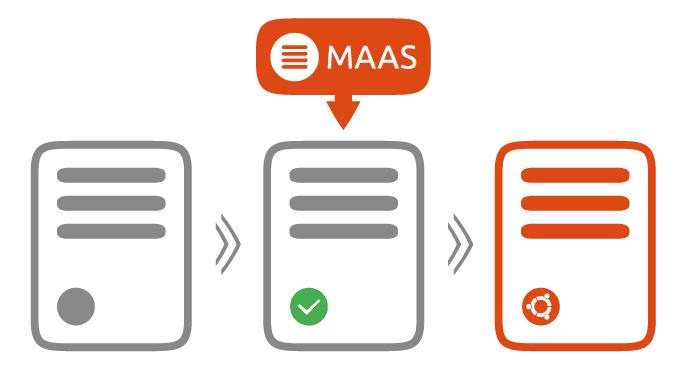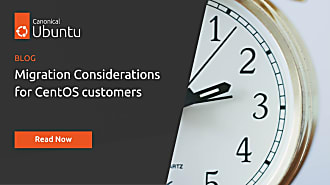Canonical
on 21 November 2017
MAAS 2.3.0 (final) Released!

This article originally appeared on Andres Rodriguez’s blog
I’m happy to announce that MAAS 2.3.0 (final) is now available!
This new MAAS release introduces a set of exciting features and improvements to the overall user experience. It now becomes the focus of maintenance, as it fully replaces MAAS 2.2
In order to provide with sufficient notice, please be aware that 2.3.0 will replace MAAS 2.2 in the Ubuntu Archive in the coming weeks. In the meantime, MAAS 2.3 is available in PPA and as a Snap.
PPA’s Availability
MAAS 2.3.0 is currently available in ppa:maas/next for the coming week.
sudo add-apt-repository ppa:maas/next sudo apt-get update sudo apt-get install maas
Please be aware that MAAS 2.3 will replace MAAS 2.2 in ppa:maas/stablewithin a week.
Snap Availability
For those wanting to use the snap, you can obtain it from the stablechannel:
sudo snap install maas –devmode –stable
MAAS 2.3.0 (final)
Important announcements
Machine network configuration now deferred to cloud-init.
Starting from MAAS 2.3, machine network configuration is now handled by cloud-init. In previous MAAS (and curtin) releases, the network configuration was performed by curtin during the installation process. In an effort to improve robustness, network configuration has now been consolidated in cloud-init. MAAS will continue to pass network configuration to curtin, which in turn, will delegate the configuration to cloud-init.
Ephemeral images over HTTP
As part of the effort to reduce dependencies and improve reliability, MAAS ephemeral (network boot) images are no longer loaded using iSCSI (tgt). By default, the ephemeral images are now obtained using HTTP requests to the rack controller. After upgrading to MAAS 2.3, please ensure you have the latest available images. For more information please refer to the section below (New features & improvements).
Advanced network configuration for CentOS & Windows
MAAS 2.3 now supports the ability to perform network configuration for CentOS and Windows. The network configuration is performed via cloud-init. MAAS CentOS images now use the latest available version of cloud-init that includes these features.
New features & improvements
CentOS network configuration
MAAS can now perform machine network configuration for CentOS 6 and 7, providing networking feature parity with Ubuntu for those operating systems. The following can now be configured for MAAS deployed CentOS images:
- Bonds, VLAN and bridge interfaces.
- Static network configuration.
Our thanks to the cloud-init team for improving the network configuration support for CentOS.
Windows network configuration
MAAS can now configure NIC teaming (bonding) and VLAN interfaces for Windows deployments. This uses the native NetLBFO in Windows 2008+. Contact us for more information (https://maas.io/contact-us).
Improved Hardware Testing
MAAS 2.3 introduces a new and improved hardware testing framework that significantly improves the granularity and provision of hardware testing feedback. These improvements include:
- An improved testing framework that allows MAAS to run each component individually. This allows MAAS to run tests against storage devices for example, and capture results individually.
- The ability to describe custom hardware tests with a YAML definition:
- This provides MAAS with information about the tests themselves, such as script name, description, required packages, and other metadata about what information the script will gather. All of which will be used by MAAS to render in the UI.
- Determines whether the test supports a parameter, such as storage, allowing the test to be run against individual storage devices.
- Provides the ability to run tests in parallel by setting this in the YAML definition.
- Capture performance metrics for tests that can provide it.
- CPU performance tests now offer a new ‘7z’ test, providing metrics.
- Storage performance tests now include a new ‘fio’ test providing metrics.
- Storage test ‘badblocks’ has been improved to provide the number of badblocks found as a metric.
- The ability to override a machine that has been marked ‘Failed testing’. This allows administrators to acknowledge that a machine is usable despite it having failed testing.
Hardware testing improvements include the following UI changes:
- Machine Listing page
- Displays whether a test is pending, running or failed for the machine components (CPU, Memory or Storage.)
- Displays whether a test not related to CPU, Memory or Storage has failed.
- Displays a warning when the machine has been overridden and has failed tests, but is in a ‘Ready’ or ‘Deployed’ state.
- Machine Details page
- Summary tab – Provides hardware testing information about the different components (CPU, Memory, Storage).
- Hardware Tests /Commission tab – Provides an improved view of the latest test run, its runtime as well as an improved view of previous results. It also adds more detailed information about specific tests, such as status, exit code, tags, runtime and logs/output (such as stdout and stderr).
- Storage tab – Displays the status of specific disks, including whether a test is OK or failed after running hardware tests.
For more information please refer to https://docs.ubuntu.com/maas/2.3/en/nodes-hw-testing.
Network discovery & beaconing
In order to confirm network connectivity and aide with the discovery of VLANs, fabrics and subnets, MAAS 2.3 introduces network beaconing. MAAS now sends out encrypted beacons, facilitating network discovery and monitoring. Beacons are sent using IPv4 and IPv6 multicast (and unicast) to UDP port 5240. When registering a new controller, MAAS uses the information gathered from the beaconing protocol to ensure that newly registered interfaces on each controller are associated with existing known networks in MAAS. This aids MAAS by providing better information on determining the network topology. Using network beaconing, MAAS can better correlate which networks are connected to its controllers, even if interfaces on those controller are not configured with IP addresses. Future uses for beaconing could include validation of networks from commissioning nodes, MTU verification, and a better user experience for registering new controllers.
Upstream Proxy
MAAS 2.3 now enables an upstream HTTP proxy to be used while allowing MAAS deployed machines to continue to use the caching proxy for the repositories. Doing so provides greater flexibility for closed environments, including:
- Enabling MAAS itself to use a corporate proxy while allowing machines to continue to use the MAAS proxy.
- Allowing machines that don’t have access to a corporate proxy to gain network access using the MAAS proxy.
Adding upstream proxy support also includes an improved configuration on the settings page. Please refer to Settings > Proxy for more details.
Ephemeral Images over HTTP
Historically, MAAS has used ‘tgt’ to provide images over iSCSI for the ephemeral environments (e.g commissioning, deployment environment, rescue mode, etc). MAAS 2.3 changes the default behaviour by now providing images over HTTP. These images are now downloaded directly by the initrd. The change means that the initrd loaded on PXE will contact the rack controller to download the image to load in the ephemeral environment. Support for using ‘tgt’ is being phased out in MAAS 2.3, and will no longer be supported from MAAS 2.4 onwards. For users who would like to continue to use & load their ephemeral images via ‘tgt’, they can disable http boot with the following command. maas <user> maas set-config name=http_boot value=False
UI Improvements
MACHINES, DEVICES, CONTROLLERS
MAAS 2.3 introduces an improved design for the machines, devices and controllers detail pages that include the following changes.
- “Summary” tab now only provides information about the specific node (machine, device or controller), organised across cards.
- “Configuration” has been introduced, which includes all editable settings for the specific node (machine, device or controllers).
- “Logs” consolidates the commissioning output and the installation log output.
OTHER UI IMPROVEMENTS
Other UI improvements that have been made for MAAS 2.3 include:
- Added DHCP status column on the ‘Subnet’s tab.
- Added architecture filters
- Updated VLAN and Space details page to no longer allow inline editing.
- Updated VLAN page to include the IP ranges tables.
- Zones page converted to AngularJS (away from YUI).
- Added warnings when changing a Subnet’s mode (Unmanaged or Managed).
- Renamed “Device Discovery” to “Network Discovery”.
- Discovered devices where MAAS cannot determine the hostname now show the hostname as “unknown” and greyed out instead of using the MAC address manufacturer as the hostname.
Rack Controller Deployment
MAAS 2.3 can now automatically deploy rack controllers when deploying a machine. This is done by providing cloud-init user data, and once a machine is deployed, cloud-init will install and configure the rack controller. Upon rack controller registration, MAAS will automatically detect the machine is now a rack controller and it will be transitioned automatically. To deploy a rack controller, users can do so via the API (or CLI), e.g: maas <user> machine deploy <system_id> install_rackd=True Please note that this features makes use of the MAAS snap to configure the rack controller on the deployed machine. Since snap store mirrors are not yet available, this will require the machine to have access to the internet to be able to install the MAAS snap.
Controller Versions & Notifications
MAAS now surfaces the version of each running controller and notifies the users of any version mismatch between the region and rack controllers. This helps administrators identify mismatches when upgrading their MAAS on a multi-node MAAS cluster, such as within a HA setup.
Improved DNS Reloading
This new release introduces various improvements to the DNS reload mechanism. This allows MAAS to be smarter about when to reload DNS after changes have been automatically detected or made.
API Improvements
The machines API endpoint now provides more information on the configured storage and provides additional output that includes volume_groups, raids, cache_sets, and bcaches fields.
Django 1.11 support
MAAS 2.3 now supports the latest Django LTS version, Django 1.11. This allows MAAS to work with the newer Django version in Ubuntu Artful, which serves as a preparation for the next Ubuntu LTS release.
- Users running MAAS in Ubuntu Artful will use Django 1.11.
- Users running MAAS in Ubuntu Xenial will continue to use Django 1.9.



